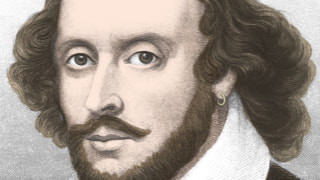Symbols are objects, characters, figures, and colors used to represent abstract ideas or concepts.
Blood
Blood is everywhere in
The Weather
As in other Shakespearean tragedies, Macbeth’s grotesque murder spree is accompanied by a number of unnatural occurrences in the natural realm. From the thunder and lightning that accompany the witches’ appearances to the terrible storms that rage on the night of Duncan’s murder, these violations of the natural order reflect corruption in the moral and political orders.
Sleep
Sleep symbolizes the ignorance that many characters find themselves facing throughout the play, and the ways in which this leaves them vulnerable. Murdered while he sleeps, Duncan is quite literally unaware of the danger he is in. Likewise, Lady Macbeth frames Duncan’s own servants, themselves also sleeping. Both actions suggest sleep poses a threat to the characters by rendering them exposed and defenseless. However, it's clear sleep is also necessary; Macbeth thinks he hears a voice saying that he has murdered sleep, highlighting the idea that, having taken advantage of this time of rest and vulnerability and, essentially, Duncan's trust, he has shattered his own mental order and resigned himself to a place of never being able to fully rest again. Disturbed by his own schemes, Macbeth is forced to continue living a life that will always be plagued by his own fractured morals. This is also echoed by Lady Macbeth’s sleepwalking habit as she wanders between the world of order and disorder. It is in these fugue states that she is quickest to emphasize her culpability, as she attempts to free herself from the images of her blood-stained hands, ranting about her and Macbeth’s guilt. Straddling the lines between the conscious and the unconscious, Lady Macbeth occupies a world of mangled sleep that reveals itself as only madness. Ironcally, having taking advantage of (and corrupted) the realm of sleep, Macbeth and Lady Macbeth find their own sleep forever tainted.
Sleep also promotes the notion of a spiritual world far beyond the everyday experience of the characters. The three witches offer a hazy middle ground, seemingly only functioning in the halfway space between dreams and waking. Theirs is a realm of prophecy and riddle, where everything they utter could be taken as either direct statements of what will come to pass, transmitted from their netherworld of augury, or merely as ways to toy with the vulnerability of mortals. While this is never given a clear-cut distinction, they continue to support both the appeal and the terror of a space beyond that of everyday waking life.

Take the Themes, Motifs, and Symbols Quick Quiz

Dive into our comprehensive guide to ace your Shakespeare assignments



 payment page
payment page


